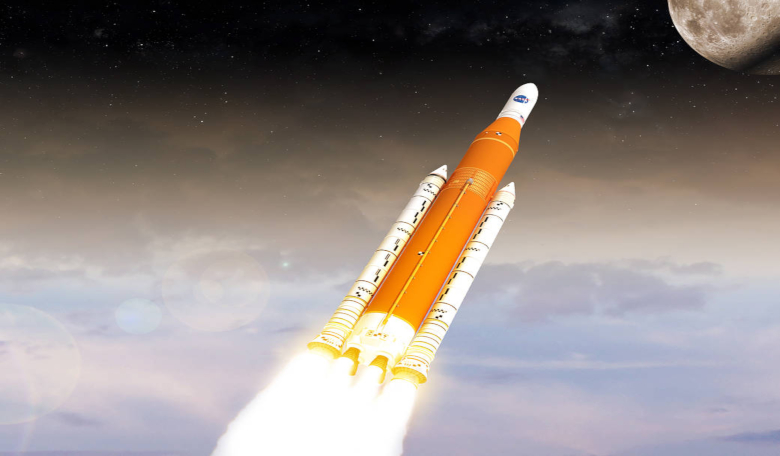A recent independent report on NASA’s bid to get to Mars by 2033 rejected the idea that the space agency could launch a mission to the Red Planet by the planned date, citing inherent technological risks and a limited budget as blame for the delays. Now another damning report has suggesting its Artemis-1 programme in which the Space Launch System (SLS) is due to fly an uncrewed Orion spacecraft around the Moon is also highly unlikely to achieve its launch date of 2020 due to similar setbacks.
The review, the latest in a series of reports addressing NASA’s human space exploration programme, has been conducted by the Government Accountability Office (GAO). It has found that persistent delays and spiralling costs, including a $1 billion deficit needed in order to get SLS off the ground, means that the earliest Artemis-1 will be ready is June 2021.
“In November 2018, within one year of announcing an up to 19-month delay for the three programs—the Space Launch System (SLS) vehicle, the Orion spacecraft, and supporting ground systems—NASA senior leaders acknowledged the revised date of June 2020 is unlikely,” says the report. “Any issues uncovered during planned integration and testing may push the launch date as late as June 2021.
“Moreover, while NASA acknowledges about $1 billion in cost growth for the SLS program, it is understated. This is because NASA shifted some planned SLS scope to future missions but did not reduce the program’s cost baseline accordingly. When GAO reduced the baseline to account for the reduced scope, the cost growth is about $1.8 billion,” the document added.
This is yet another disappointment for the thwarted SLS rocket, which has seemingly been plagued by problems since the beginning. NASA also came under fire for paying over $200 million in award fees related to contractor performance despite the SLS and Orion programmes continuing to fall behind schedule.
One of the main reasons behind the delays stems from an underestimation of the complexity of manufacturing and assembling the core stage engine section, says the report. “According to NASA officials, they expected the work instructions — detailed directions on how the vehicle should be built — to be largely complete by the program’s critical design review, which precedes the production decision. In this case, however, the build plans were not complete by the start of production.”
A lack of technicians was also cited as a cause for slow progress on Boeing’s behalf. "As core stage production began, Boeing was focused on minimizing the number of technicians, in part to keep costs low, and hired about 100 technicians." The company actually needed two-and-a-half times that amount to keep the project on schedule.
NASA responded to the report, entitled “Persistent Delays and Cost Growth Reinforce Concerns over Management of Programs,” via a letter from the agency’s Associate Administrator for Human Exploration and Operations, William Gerstenmaier, who after chastising government investigators for being overly cynical about the programmes progress, pointed out the unnecessarily pessimistic title of the study.
“The GAO report repeatedly projects the worst-case schedule outcome,” wrote Gerstenmaier. “While NASA appreciates the GAO’s need to be candid in its review, the Agency does take exception to the unnecessarily negative language used in the report title and second headings and the lack of acknowledgement of progress the Agency has made.
In addition, said Gerstenmaier, they had failed to take into account the complexity and technical challenges associated with building, amongst other things, the world’s biggest and most powerful rocket.
“The GAO does not acknowledge that NASA is operating in a dynamic environment, building a multi-decade program, with multiple spacecraft and launch vehicle configurations, and with content that is subject to change as NASA’s deep space exploration objective evolves and program direction is adjusted,” he said.
Gerstenmaier, is however, determined to push ahead as planned. “Like all other development programs, the challenges we have experienced are significant, but not insurmountable. The issues encountered are commensurate with first-time production programs on a large-scale and should not be unexpected,”says Gerstenmaier. “NASA’s goal for returning humans to cislunar space remains on track.”











